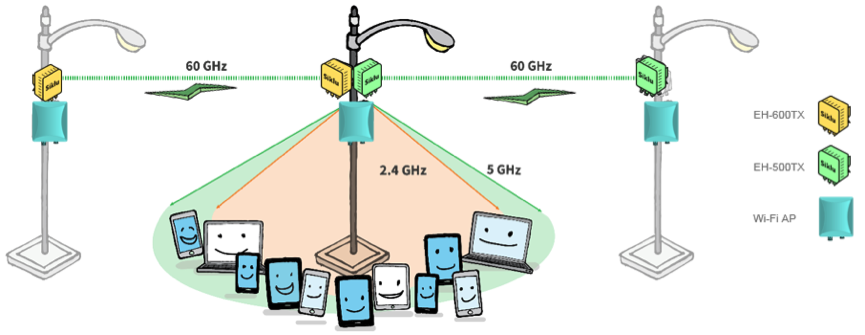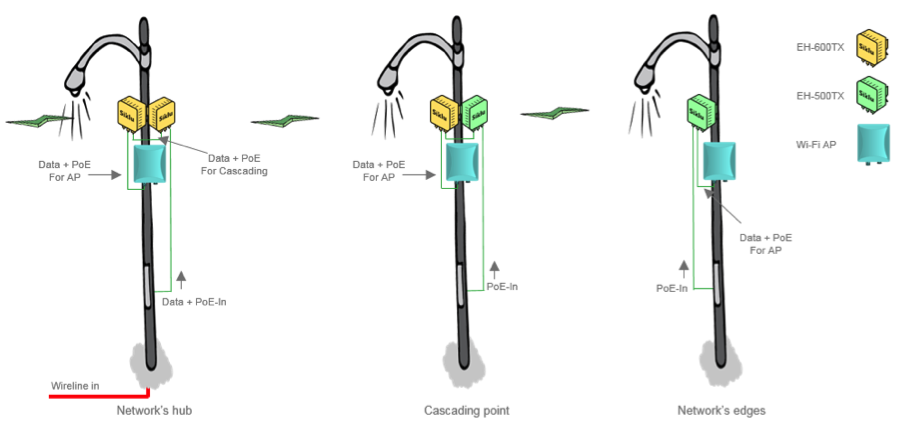
08 Jun 2016 5 Reasons Your 5GHz Wi-Fi is Getting Congested and What to do About It
The 5GHz band you’re using to provide Wi-Fi access is about to get even more congested and you need to act now to continue providing quality service to your Wi-Fi users.
A few trends are converging, unfortunately, all on the unlicensed 5GHz band
- Your users need more capacity (video, video, video) and in order to provide high capacity access you’re using wider channels, as wide as 160MHz in some cases.
- 5GHz is an unlicensed frequency meaning everybody has the access to the spectrum. Further to this, there is no coordination of channels or sub bands meaning your neighbour (or soon to be new neighbour) could deploy a 5GHz radio on the exact same channel significantly increasing congestion and co-channel interference.
- The total number of carrier-grade Wi-Fi hotspots are expected to grow to 72% of all hot-spots by 2018 (source: Amdocs & Rethink Technology). Carrier grade means tougher competition on every available MHz, and this time vs. carrier-grade gear with higher Tx power and wider channels…
- The Internet of Things is starting to gain real traction. All those Things need to be connected to the Internet, and a good chunk of them will connect over the 5GHz band.
- And lastly there are security cameras. Today’s cameras can stream multiple 4k streams from a single pole, we’ve seen as many as 7 streams in a single location. Those streams need high-capacity connectivity too.
So while traditionally you’ve been dividing up your Wi-Fi spectrum for use in access and backhaul, you may want to rethink that strategy.
You can easily shift your backhaul traffic to the 60GHz band, also unlicensed, and free up the 5GHz band for access.
The 60GHz band is wide and un-congested, perfect for providing high-capacity backhaul with no interference. Some of the benefits of Siklu’s 60GHz V-band backhaul are:
- Gigabit capacity that guarantees high-performance backhaul for Wi-Fi networks.
- If you’re used to performing frequency site surveys before each deployment, to find clean channels, you’ll love the 60GHz band. The 60GHz spectrum is 9GHz wide and abundant, and the antenna beams are narrow. On top of that, the band is subject to significant oxygen absorption, which makes it, almost interference free no matter how densely you deploy links. Siklu supports 11 non-overlapping channels. Sounds scalable? It is.
- Get predictable performance and guarantee SLAs thanks to Siklu’s easy-to-use online link budget calculator tool. Combining global rain-zones data with the radio’s specs, the tool allows you to easily perform highly accurate frequency planning. The tool also optimises channel selection for planned link length, as channel attenuation varies in the 60GHz band.
- < 2 litter all-outdoor solution with integrated antenna, makes it easy-to-deploy on existing street furniture and facades, and includes Gigabit switch with PoE-Out to simplify cascading and serving your Wi-Fi gear with both capacity and power on a single cable.
- Install and forget it with an all-weather IP67 sealed Siklu and its proven MTBF of 90+ years.
 Figure 1: Optimal spectrum utilisation
Figure 1: Optimal spectrum utilisation
Now, let’s see what your future-proof Wi-Fi network looks like:
- Siklu’s EH-600TX deployed for cascading and rings utilising its 1 Gigabit capacity
- Siklu’s EH-500TX deployed at network’s edges, where its 100-200Mbps capacity perfectly matches max capacity of common advanced Wi-Fi access points such as the Ruckus Wireless T301 or T300, both supporting peak data rates of 120Mbps
- Both EH-600TX and EH-500TX support dual PoE-Out for simple deployment and can power the Ruckus APs. The Ruckus T300/T301 max power consumption is 11 Watts, while the EH-500/600TX PoE-Out delivers 26 Watts. On top of that, network engineers can remotely switch on and off the PoE-Out feature, to simplify troubleshooting procedures
 Figure 2: Simplified deployment with Siklu’s integrated switch and dual PoE-Out
Figure 2: Simplified deployment with Siklu’s integrated switch and dual PoE-Out